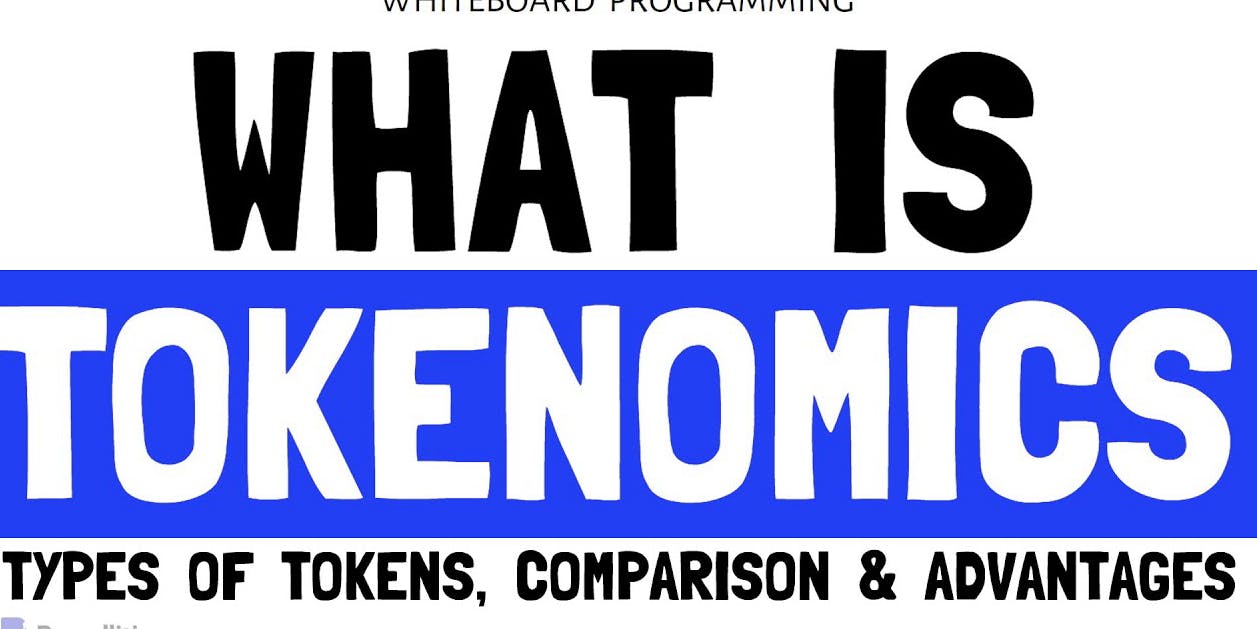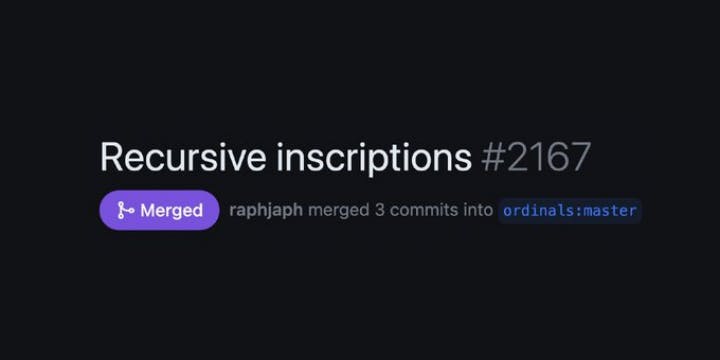
How to Judge the Quality of an X to Earn Project's Economic Model?
Is the economic model important for a Web3 project? Perhaps 8 out of 10 people would say it is important. But to some extent, the economic model is not that important. Either most projects' economic models have a high degree of convergence, or the proportion of token distribution does not appear as professional as it seems. In fact, the values of most token distributions, under the premise of referring to mature solutions in the market, are more of a decision made by the founding team.
Now, let's go back to the question above, is the economic model important for a Web3 project? It is important, but it needs to be combined with various elements of the project itself, such as vision and product quality, rather than simply stacking complex formulas in the economic model to play with numbers.
In fact, a good project target is not necessarily using the latest economic model, and this model may not be very complex, but it must be the most scientific economic model, which needs to be combined with the product features.
This article by veDAO aims to popularize the elements of the economic model for the majority of readers, so that everyone can be more proficient in the project selection process in the future.
First, we need to understand what an economic model is.
Economic model: In English, it is Tokenomics, a combination of the words Token and Economics. As the name suggests, it refers to the economic operation of the issuance of cryptocurrencies in the blockchain ecosystem. Its main function is to govern the supply, usage, distribution, incentives, utility, governance, and monetary policy of project tokens, among other things.
With the rise of the DeFi concept and the increase in on-chain participation channels such as interaction, airdrops, stake, and IDO, users have more opportunities to participate in the growth and early stages of projects. Therefore, the importance of the project's economic model has also increased. At its core, this is because it is the mechanism behind all current on-chain behaviors. As a project party, you must use tokens to incentivize all participants to maintain the spontaneous operation of a complex economic incentive system. As a participant in the decentralized revolution, you must study and observe the advantages and disadvantages of different Tokenomics to choose investment targets, because tokens are the mainstream financing method for Web3 projects, so Tokenomics is an important factor affecting investment returns.
The Importance of the Economic Model:
There is a saying: From 0 to 1, it depends on the product, from 1 to 100, it depends on the economic model. A high-quality product first needs good quality to drive the first step, and then needs an economic model to get the flywheel running.
Therefore, the economic model is important for a product for the following reasons:
1. Replacing traditional user acquisition
For Internet products, the economic model provides a new business model. If the survival of traditional products depends on bearing the pressure of loss in the early stages of the project, even at low user prices and investing a large amount of capital to acquire users, gaining a competitive advantage in the market, and then aggregating user relationships and recovering costs.
With the introduction of tokens, the task of seizing the market can be handed over to the tokens. On the one hand, by managing the market value, creating a value window for tokens, attracting more people to hold them, and capturing the user's mind. In this process, the appearance of the token's value window often spontaneously attracts more attention from users and the market, indirectly completing the traditional user acquisition task.
During the DeFi Summer period, the struggle between Uniswap and Sushiswap is a classic case: as the pioneer of DEX, Uniswap initially did not want to issue tokens, but Sushi pre-emptively attracted a large number of users from Uni through token airdrops. At its peak, Sushi's user share accounted for 70% of Uni's, causing Uni to feel threatened.
Sushiswap's cold start and rise were built on the process of "vampire attack" on Uniswap. When Sushiswap went live, it quickly attracted liquidity by allocating SUSHI to early LPs. With each block update, a certain amount of SUSHI would be released and distributed to LPs. Initially, Sushi required the liquidity provided to be LP Tokens from specific pools on Uniswap, which quickly increased Uniswap's locked amount after Sushi went live.
Two weeks after going live, Sushiswap initiated liquidity migration, moving all LP Tokens participating in SUSHI mining in specific Uniswap pools back to Sushiswap, thus completing the rapid plunder of liquidity.
2. Reducing the difficulty of investment and financing, and shortening the cost recovery period
As mentioned above, traditional Internet products often need to gain market share before they can become profitable, which is one of the reasons why companies like JD and Bilibili have been continuously losing money. However, aside from policy risks, a Web3 product that issues tokens will often issue its own tokens before the project's functionality is about to go live, front-loading revenue through the economic model, allowing the project to reinvest the funds that are recouped back into the project, making the flywheel turn faster.
It must be admitted that in the current Web3 context, the main way for projects to make money is still through token sales. However, when a project has the conditions to issue tokens but chooses not to, it means that the pressure to make a profit is completely transferred to the quality of the product, which brings it back to competing with traditional Internet products.
This phenomenon is not uncommon in the Web3 industry, especially for teams that have shifted from gaming to blockchain. Due to the special nature of games, these teams often absorb many practitioners from Web2. Therefore, out of natural fear of going global, regulatory constraints, or the limitations of traditional game operation methods, even though they are making blockchain games, they are afraid to issue tokens, which puts tremendous pressure on the team's operations and reduces the success rate of entrepreneurship.
Moreover, for purely Web3 projects, not issuing tokens also means being passive in the Web3 market. For example, Opensea once held more than 98% of the market share. With a 2.5% transaction fee, its highest monthly revenue exceeded $350 million.
However, because Opensea has been iterating slowly and wants to go the equity financing route, it has never issued tokens, and has been targeted by projects like looksrare, x2y2, and blur through token airdrops and incentives to grab the giant users on Opensea.
According to Dappradar data, as of June this year, Blur, which has innovated in the economic model, has a total lock-up value of $167.7 million, accounting for 65% of the NFT market share, while the former king Opensea has fallen to 27%.
Classification of Economic Models:
Currently, within the industry, the classification of X to Earn project economic models can be divided into four types of token: governance tokens, utility tokens, special tokens, and NFT.
Here, we quote Buidler DAO's "Tokenomics, the Economic Order of the Crypto World," which defines the four types of tokens:

It is worth noting that Buidler DAO directly classifies bill tokens as a special third type of token, but in fact, this category can be expanded further. Currently, some gaming and social products in the industry generally embed a type of off-chain token similar to points in the conventional dual-currency model, which can only be converted into on-chain currency under specific conditions. These point-like tokens should also be considered as a special third type of currency.
Based on the combination of these four types of tokens, the mainstream solutions can be divided into single-token, dual-token, and triple-token models.
Single-token model: Refers to a single token issued based on the ecosystem content itself. This type of token often only carries out a single governance function (such as UNI), or it may simultaneously serve governance and utility functions.
However, because most of these models use a fixed supply, if they only carry out on-chain governance functions, it means that the value of the token is difficult to be reflected, and the willingness of holders to hold the token will decrease as the project's iteration speed decreases.
If it simultaneously serves governance and utility functions, it means that users will obtain more tokens through various means, ultimately leading to an explosion in the inflation rate, affecting the market's value assessment of the token during IDO.
Therefore, many project parties have optimized this model, either by splitting governance and utility functions, which is the so-called dual-token model, or by expressing utility functions in the form of points.
Dual-token model: The so-called dual-token generally refers to the combination of governance tokens and utility tokens, with the addition of NFT elements. The earliest proposal was by Near, which issued the stablecoin USN, which can be integrated into the NEAR protocol as a native asset for paying gas and storage fees. This can be seen as the earliest form of a utility token. Subsequently, the dual-token model was further developed by the well-known Axie.
The appearance of the dual-token model greatly delayed the death spiral cycle of the original single-token model. By linking utility tokens with governance tokens, the selling pressure of governance tokens is transferred and consumed, reducing the risk of project failure. However, on the other hand, managing a dual-token system is not just twice as difficult due to the potential correlation between tokens. When there are more than one type of token in the system, how to allocate value reasonably becomes a necessary consideration. In addition, since utility tokens are often issued indefinitely, they are easily trapped in an inflationary situation. If excessive inflation or other related reasons cause the price to fall, in order to maintain a sufficient level of incentive for users, more tokens need to be issued, further strengthening inflation.
Triple-token model: This solution is not a popular choice in the Web3 market, as the triple-token model was generally seen as a patch based on the dual-token model at the time, but there has been some innovation since then. The triple-token model is best known for the VCT model that emerged last year: based on the traditional governance token + utility token model, it added a token for capturing asset value.
VCT Tokens are strongly related to utility tokens: in terms of quantity, regardless of inflation or deflation, the ratio of the two tokens always remains 1:1; in terms of price, because each utility token can be "exercised" at any time (exchanged from the project party for a VCT token, which can then be exchanged for a stablecoin equivalent to the current VCT token price). Therefore, the price of the utility token is always greater than or equal to the price of the VCT token.
In addition, VCT Tokens are "unfelt" by ordinary players, do not increase the burden on players, and do not circulate on the secondary market, only being used when "exercised." The "exercising" process is irreversible and one-way, each utility token and VCT Token can only be "exercised" once, and after "exercising," both the utility token and VCT Token will be destroyed.
For example:
-
The number of utility tokens in a certain game = VCT = 10,000
-
The total value of VCP that accesses advertising revenue and fiat currency revenue = $10,000 USDT
-
So at this time, 1 VCT = 1 USDT
-
When the utility token is sold on a large scale, starting from $3 USDT and continuously falling
-
Through the "exercising" mechanism, players will feel that they can lock in a return rate of at least $1 USDT, so it will not cause panic. Instead, due to the deflationary expectations of "exercising," it will effectively suppress the downward trend of the utility token.
When this model was proposed, it sparked a heated discussion. Before this, many game teams had already set aside a certain proportion of tokens from the governance token to specifically exercise the role of VCT. In other words, under the premise of future related functions, is it necessary to introduce a new token? In addition, the "triple-token" model represented by VCT, is also based on the initial capture of sufficient value in the game, which is icing on the cake. However, it cannot solve the problem of where the initial liquidity comes from, and cannot provide timely help.
After discussing the classification of the X to Earn model's economic model, we also need to pay attention to several dimensions:
First is the three major elements of the economic model:
Supply: The source of the target token, usually divided into two methods:
Public offering: ICO, IEO, IDO, Launchpad, Fair Launch (Benddao model, everyone has the same cost), ILO (X2Y2 model, first liquidity issuance, now most small projects do this).
Incentive behavior: Airdrop, TVL investment incentives, Stake incentives, Volume incentives (projects mainly on exchanges), Liquidity (DEX main area), P2E (X to Earn model).
Three terms to pay attention to:
TGE: How much is in circulation at the time of token issuance Cliff: How long is the freeze before unlocking Vesting: How long it takes for the tokens to unlock
Demand: The usage scenarios of the target token, generally including: value storage, spending, mining, governance, protocol income, collateral,
Memes, speculative demand (sector rotation).
Value capture: Ultimately, the value capture path of the token needs to be resolved: service fee payment (MV=PY), buyback and burn (rarely used now with staking), staking protocol income, buyback rewards.
In general, a good economic model should have the following characteristics: low inflation rate, high incentives, low selling pressure, rich usage scenarios, sufficient liquidity, and a main governance group from the B-end.
In addition, when investing in projects that require decentralized governance, such as public chains, it is necessary to analyze whether their economic model has incentives for maintainers and value capture for tokens, to ensure that the project can provide users with continuous and stable services, while allowing network maintainers to capture value and reduce selling pressure;
When investing in DeFi projects involving large amounts of fund transactions, the focus of analysis should be on how the economic model coordinates the interests of LPs and governance token holders, including whether income can continue to incentivize LPs to provide liquidity and whether governance token holders can receive reasonable income.
But in the end, a good product is the key to user retention. Just as mentioned above, the economic model can only complete the transformation from 1 to 100, but the most difficult transformation from 0 to 1 depends on the quality of the product itself and operational methods.
veDAO is a decentralized investment and financing platform led by a DAO, committed to discovering the most valuable information in the industry, and is enthusiastic about exploring the underlying logic and cutting-edge tracks of the digital encryption field, allowing every role within the organization to fulfill their responsibilities and receive rewards.
Website: http://www.vedao.com/ Twitter: https://twitter.com/vedao_official Facebook: bit.ly/3jmSJwN Telegram: t.me/veDAO_zh Discord: https://discord.gg/NEmEyrWfjV
🔴Investment carries risks, projects are for reference only, please bear the risks on your own🔴




